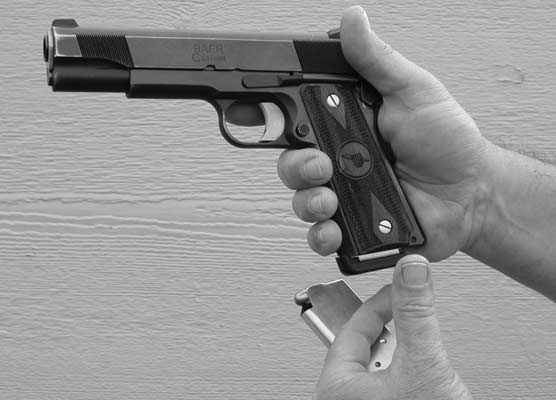Good article on reloading your pistol, good refresher for all shooters. Shows empty reload and tactical reload, good pics included



Paul Harrell does this as he said it keeps his gun loaded in a combat situation..he demonstrated it dozens of times, as he keeps track of his shots, and drops the mag before the last cartridge, allowing hm to not have to rack the slide.Good article on reloading your pistol, good refresher for all shooters. Shows empty reload and tactical reload, good pics included

Saves time on dropping slide/racking slide when counting rounds.Paul Harrell does this as he said it keeps his gun loaded in a combat situation..he demonstrated it dozens of times, as he keeps track of his shots, and drops the mag before the last cartridge, allowing hm to not have to rack the slide.
however, he is an expert shooter, with zillions of years of practice
i think under stress, most of us would not be able to do that
I'm somewhat old, can't count that fast.Saves time on dropping slide/racking slide when counting rounds.
Shoot slower or by 2's.I'm somewhat old, can't count that fast.
thing with that is....some of us had the pleasure of multi-round magazines, as i had many 21 round mags..Shoot slower or by 2's.
I am going to practice this next time I am at the range.Paul Harrell does this as he said it keeps his gun loaded in a combat situation..he demonstrated it dozens of times, as he keeps track of his shots, and drops the mag before the last cartridge, allowing hm to not have to rack the slide.
however, he is an expert shooter, with zillions of years of practice
i think under stress, most of us would not be able to do that
that's my issue, no way to practice that here..I am going to practice this next time I am at the range.
